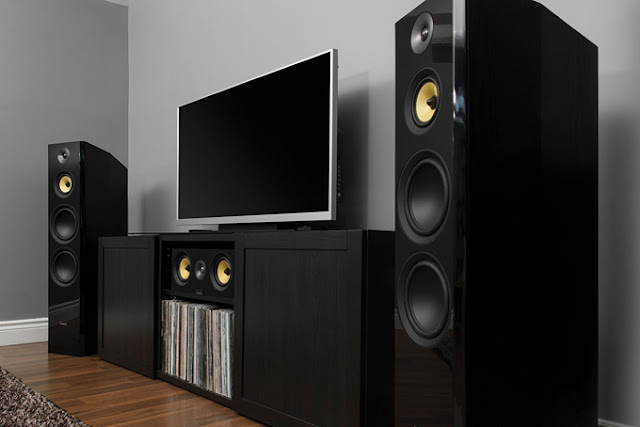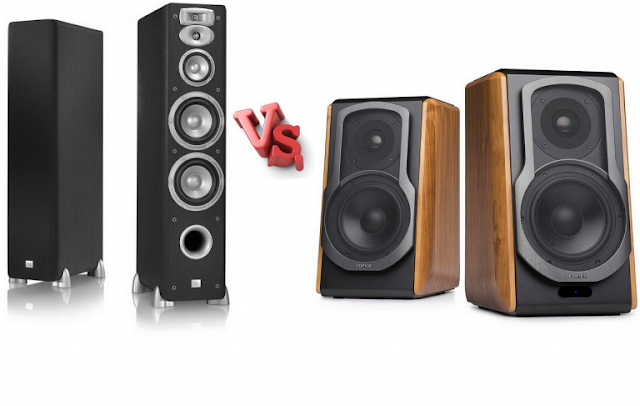The Differences and Benefits of Floorstanding, Bookshelf, Bipolar Speakers
As audio fans, a large number of us have an individual journey for the ideal sound in our home. Picking the correct speakers that fit our individual surroundings, financial plans, and space necessities can be a test. You can even add stylistic layout and the (as some call it) "spouse acknowledgment" factor as a likely impact on your selection of speakers.
Accordingly, you have numerous brands to browse, yet extraordinary structure variables of speakers that each have their own novel characteristics and upsides and downsides in various spaces. Loudspeakers come in three significant sorts: floor-standing, shelf, and bipolar. Inside these classifications, nonetheless, a considerable amount of variety exists. To benefit from your amplifier framework's quality sound, you'll need to comprehend the elements of each.
Floorstanding Speakers
Floor-standing speakers are a music-listening top choice, generally favored in view of their versatility and limit with regards to high frequencies. They don't should be set on a stand or table, and they can house various speaker drivers, which takes into consideration a higher scope of frequencies. Thus, they're normally chosen by music-sweethearts who favor melody vocals and exchange in center reaches.
A couple of floor-standing speakers may incorporate uninvolved radiators or front and backports. These ports stretch out to low-recurrence yields, giving the audience a full tune range. Some floor-standing speakers even incorporate fueled subwoofers which can additionally support low-recurrence execution.
Some audio lovers depend on a 2 channel framework and put a dominant part of their spending plan in the floor-standing loudspeakers. The advantage of simply having a 2.0 or 2.1 framework is the huge space reserve funds by not requiring extra speakers in the listening zone. In like manner, you don't need to stress over running wires to badly designed regions.
Bookshelf Speakers
BookShelf speakers are likewise unimaginably well known. These speakers are somewhat smaller than floor-standing speakers, and they're sufficiently little to fit inside a shelf, on a work area, or even as a component of a TV framework arrangement.
Ordinarily, Bookshelf speakers are planned in a "container" shape. As a result of their little size, they may have an unrivaled low-recurrence reaction. All things considered, film and music-sweethearts who need a further reach should match them with a subwoofer to incorporate those low-bass frequencies. Regularly, shelf speakers are coordinated into a home venue surround sound arrangement which as of now has a powerful subwoofer. For more minimal frameworks (rather than utilizing floorstanding speakers) they can be utilized as fronts notwithstanding being utilized as backs, or surrounds.
Notwithstanding what their name proposes you would need to try not to set up your shelf speakers inside a real shelf as the sound may reverberate inside the encased space. Better situation choices remember for an open media stand, mounted to the divider on appropriate mounts, or on speaker stands.
Some Bookshelf speakers have implicit enhancers permitting them to be remaining solitary music frameworks. This implies you needn't bother with a different intensifier or recipient, which makes for a reduced and advantageous speaker framework. This is especially valuable for a straightforward turntable arrangement or in the event that you needed to improve your TV audio with a basic pair of sound system speakers that occupy little room, yet will out-perform worked in speakers or soundbars.
Bipolar Speakers
Bipolar speakers emanate sound in two ways, similarly. Therefore, they're generally bought as a feature of a surround sound bundle. Bipolar surround sound happens when a speaker framework's speaker drivers are arranged on inverse sides of a speaker bureau—making Omni-directional sound.
The plan of bipolar speakers makes a wide sound field so you can't tell where the sound is coming from. They are viable in filling in audio holes between the front and back of the room. Their optimal position is on the space to make a rich soundscape. You can likewise return them in the space to be utilized as back surrounds.
Will These Speakers Work Together?
Totally! Truth be told, a ton of home theater developers use various kinds of speakers for various channels. Floor-standing speakers regularly do the truly difficult work as the fundamental speakers. Shelf speakers are frequently utilized as surrounds or if space is a limit, both detached and controlled shelf speakers can make extraordinary front speakers.
Concerning creating the ideal surround sound experience, hardly any things contrast with the wide-arriving at bipolar speaker arrangement. Some choose a 5-channel speaker framework utilizing bipolar as backs or surrounds. Others pick shelf speakers to go about as their back or surround speakers relying upon the direction of the room.
What is extraordinary about these segment frameworks is you can develop them over the long haul. You can begin with a pleasant 2.1 channel framework and gradually gain a middle channel, at that point backs and surrounds as you have more spending plan to work with. KLH Audio recommends that you stick to one speaker arrangement as the speakers are regularly tone coordinated and intended to cooperate for the best sound.







Amazing article
ReplyDelete